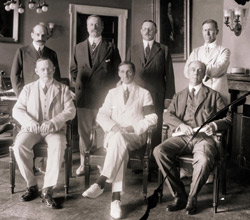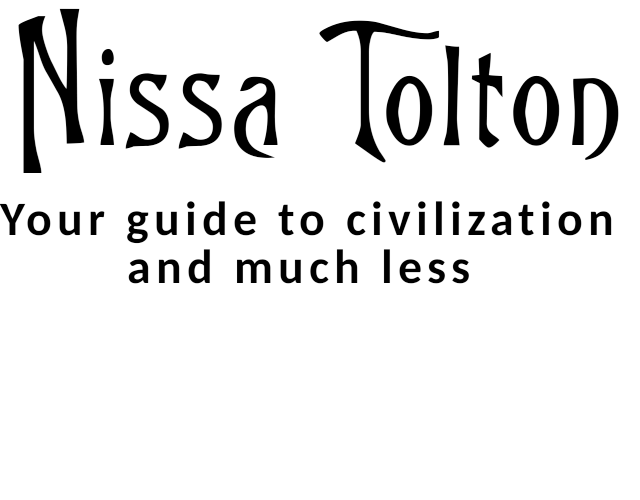Conspiracy Theory Theory
Introduction
There was much conspiracy discussion in 2020-2021, and most of it centered around conspiracies that didn’t exist. Curiously absent were conspiracies that did.
This essay is not about debunking fanciful conspiracy claims, like Marjorie Taylor Greene’s Jewish space laser. We’re here to talk about why a reasonable person might suspect that a conspiracy exists where none does. It is a quirky feature of the logic of our reality that the appearance of conspiracies can and does arise. And then, it is a quirky feature of our society that conspiracies that do exist are ignored.
Conspiracies that Do Not Exist
Doctors routinely recommend avoiding or limiting the use of vitamins. This is in an economy in which food is fertilized with chemicals needed to promote growth, not nutrition. This is in an environment in which prepared and cooked foods are vitamin-deficient.3This is for a population that suffers from chronic vitamin deficiency and diseases that might well have been avoided with healthy diets (for example, the Mediterranean diet). in 2004, there were three recorded deaths in children from vitamin overdose. (To compare, consider that the same year, 4470 people died from choking on food.)
The question is, why would medical doctors promote mistrust of vitamins? Wouldn’t it be better to remain silent? Well, people who are vitamin-deficient have more medical problems, and that means, doctors have more patients. Doctors are financially motivated to convert non-patients into patients. Exaggeration? Consider this: For-profit hospitals have higher readmission rates than non-profit hospitals. That means that something is going on in for-profit hospitals that makes it difficult for patients to avoid being profitable.
Conspiracy? Most likely not.
Imagine that the job performance of a hospital director cuts corners on sanitation, he will save money in the short-term. If there is an increase in secondary infections, the hospital will not be sued, because that is hard to prove. What will happen are new billing opportunities. If dirty door handles gave patients an electric shock, the directory would order the door handles be cleaned regularly. His attention is not on the profitability, but on the liability, and here, there is none.
The same thing is true of vitamins. Medical doctors are notoriously under-educated in nutrition. Some medical students receive a single course in it. That has not changed in over a century because it is not problematic. Medical practices, which lead to malpractice suits, are changed. Medical practices that do not lead to suits go unchanged. There never was a conspiracy to teach profitability, there was a lack of liability threat.
Conspiracies That Do Exist
Educated people are highly dismissive of conspiracy theories, and this leads to the alarming situation in which real conspiracies are ignored. There are real conspiracies: well-documented, uncontroversial, and yet widely ignored.
Fractional Reserve Banking
Children are taught that workers save money, which they then deposit in banks. Bankers then lend the money to small businesses, which makes the economy big and strong. Interest is dutifully collected by the bankers to reward the thrifty workers. This is bold and mind-blowing capitalist propaganda, at the same level of Soviet propaganda: It is tenuously related to the truth, but the stretch is such that it is essentially a deception.
The reality is uncontroversially fractional reserve banking.
Imagine that a depositor (which could be another bank) deposits 100€ in a savings account. (The bank may then issue a loan of 900€ based on that 100. The bank is required to retain only approximately 10% of what is on its books.) The eeriness arises when the borrower deposits that 900€ in another bank, which may then issue a loan of 900-10%=810€ and so on and so on. A veritable house of cards is thus created, which sometimes does collapse (otherwise known as financial crises or depressions). There is a real conspiracy among bankers to create money out of thin air, using rules that most people find outrageous.
The icing on the cake is this: the rules themselves are subject to a little #MeToo action every now and again:
On 29 April 2004, members of the Securities Exchange Commission met in a basement hearing room with representatives of five of America’s greatest investment banks. The Net Capital Rule, which defined how fractional reserve banking applied to them was substantially relaxed. What was once merely outrageous became insane. Many observers identify this moment as a contributor to the 2008 financial crisis. This meeting was no secret. And it yet, it was arguably the most awesome conspiracy of the first decade of the third millennium.
Federal Reserve Bank
There is no US internet search engine. There is google. And there is no US dollar. There is the Federal Reserve.

In early November, 1910, a group of leading financiers met on Jekyll Island for 10 days to plan a private central bank for the United States, whose share-holders would not be the taxpayers, but the great banks themselves. The result of that conspiracy is the Federal Reserve Bank, enacted in 1913.
Timothy Geithner, Chairman of the Federal Reserve Bank of New York, the division that oversaw Wall Street banks in the run-up to the 2008 crisis, actually proposed socializing banking risk while privatizing banking profit. What once was just a laughable teen-age fantasy of Wall Street bankers became reality in 2009, when Geithner became US Treasury Secretary.
Conspiracy Conspiracy?
The list of documented and uncontroversial conspiracies goes on. So, the question is, why are there banking conspiracies involving the Illuminati, Templars, and Rothschilds, when the Federal Reserve system is essentially self-documenting?
One must conclude that our minds are controlled by an inner circle of elites which does not want us to get the idea of interfering with their wicked plans.
